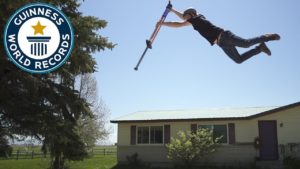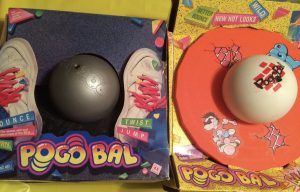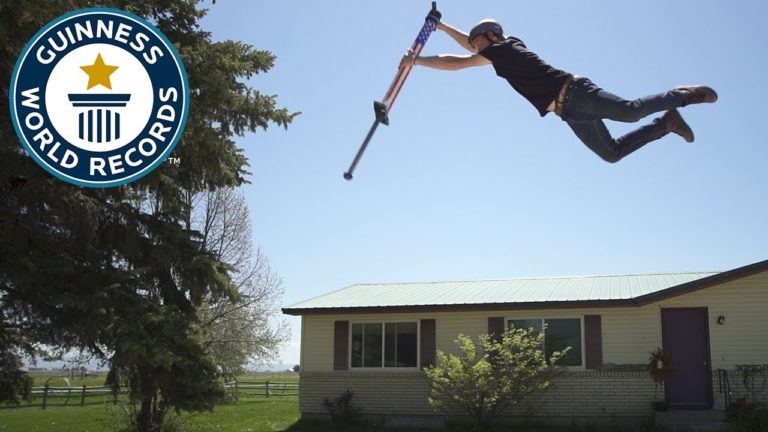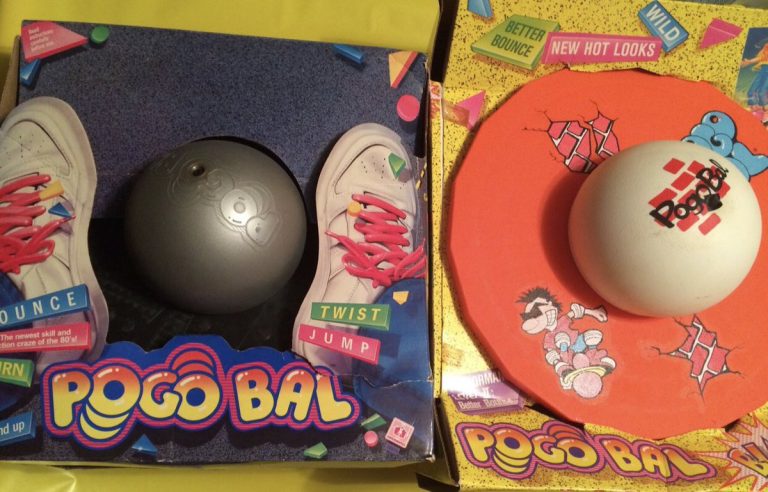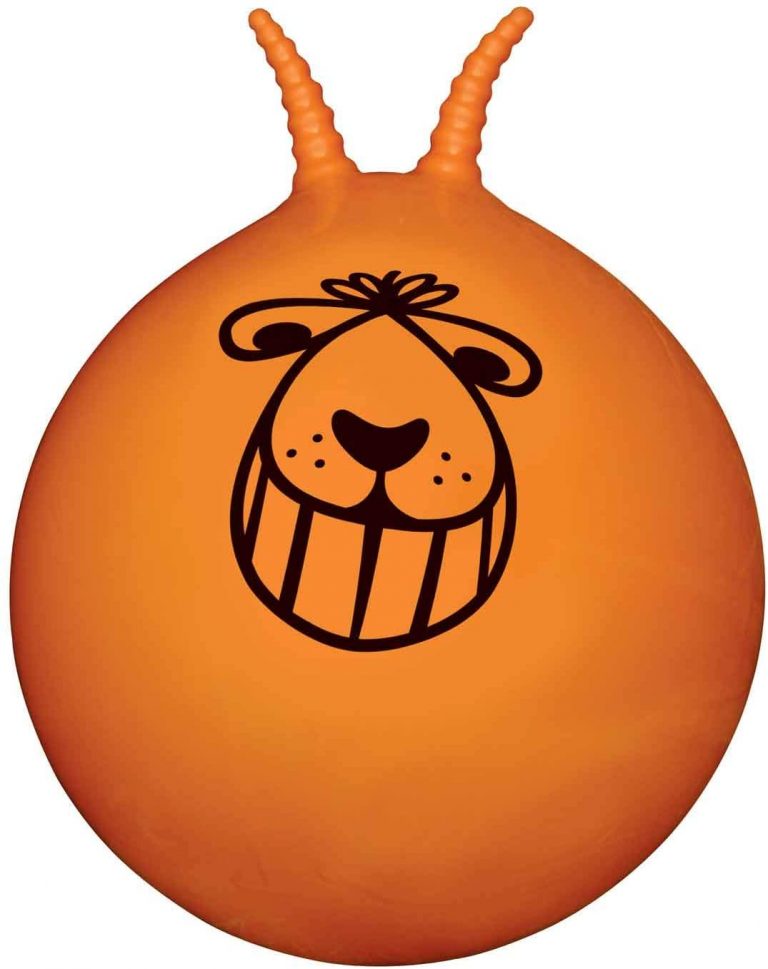History of Space Hopper – Hopper Ball
Have you ever heard of a Hoppity Hop, Ride-a-Roo, Kangaroo Ball, or Space Hopper? Honestly, I never have but as soon as I saw the picture of the yoga ball with a handle, I knew exactly what they were. It was the type of fun toy – daring but not too daring — I would have loved as a kid (and it probably would have saved me the broken arm I got from roller skates at 10 years old too! Ha.)
Funny enough, I originally thought the Space Hopper was the *natural* evolution of the yoga ball to make them fun for kids but it looks like these hoppy balls came earlier…much earlier. The Space Hopper was actually first developed in the early 1960s by Aquilino Cosani. The toy was initially called a “Pon-Pon” due to the sound it made as it bounced. From conception, Cosani geared his toy for children and their enjoyment. Beginning with testing the prototypes exclusively with children, to picking the original orange color, and making the ball from durable, elastic PVC material; everything was made with consideration and purpose. Pon-Pons were released for the first time at the Neremberg Toy Fair and because an instant success. Despite all his efforts toward developing the original toy, his company only patented the handle, this was also done on purpose to allow other companies to develop their own versions.
By the late 1960s and early 1970s, The Pon-Pon was a popular toy across Europe and the USA. In Europe, Wembley, a British company, redesigned and repackaged the toy under the name Space Hopper – which is the most popular name to this day. In the US, the toys were sold primarily as Hoppity Hops.
It seems that when Wembley developed their version of the Pon-Pon, they decided to change the shape from round to tear-shaped and alter the handle from a bar to two horns to make it look like an outer space creature (Ah-ha, I was wondering why the name went from Pon-Pon to Space Hopper!?). They also helped fuel the market for the toys by endorsing hopper recreational races with a local chain of family resort camps in the 1970s.
Like many toys, over time the popularity of the Space Hoppers declined and by the 1990s, due to the introduction of other bouncy toys as well as the influx of bouncy ball competitors adding additional colors, designs and using different materials, the toy took a backseat to more modern and adventurous toys.
Despite the changing market, however, the Space Hopper continues to cause ripples and resurgences in popularity whenever a tv show or advertisement brings them back via an episode or ad. In addition, for many fun-loving crowds, Space Hoppers have fueled a few world records over the past 20 years, including the fastest mile on a Space Hopper in 2010, the most people hopping simultaneously on a hopper in 2013, and the most bounces on a hopper in a minute in 2019. With such a fun-loving, family friendly toy, I wonder if these hoppers are making a strong comeback?!
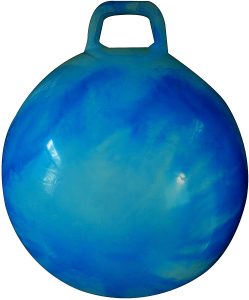
References
- The Secret History of Balls: The Stories Behind the Things We Love to Catch, Whack, Throw, Kick, Bounce and Bat
- Wikipedia – https://en.wikipedia.org/wiki/Space_hopper
- Do You Remember – Space Hoppers: https://www.doyouremember.co.uk/memory/space-hoppers
- Guinness World Records – Most bounces on a space hopper in one minute
- Guinness World Records – Most people on space hoppers
- Guinness World Records – Fastest mile on a space hopper
RELATED POSTS

About Peter
Father of very active four children and ends up having to review all sorts of randomness. They love to play soccer and jump around.

